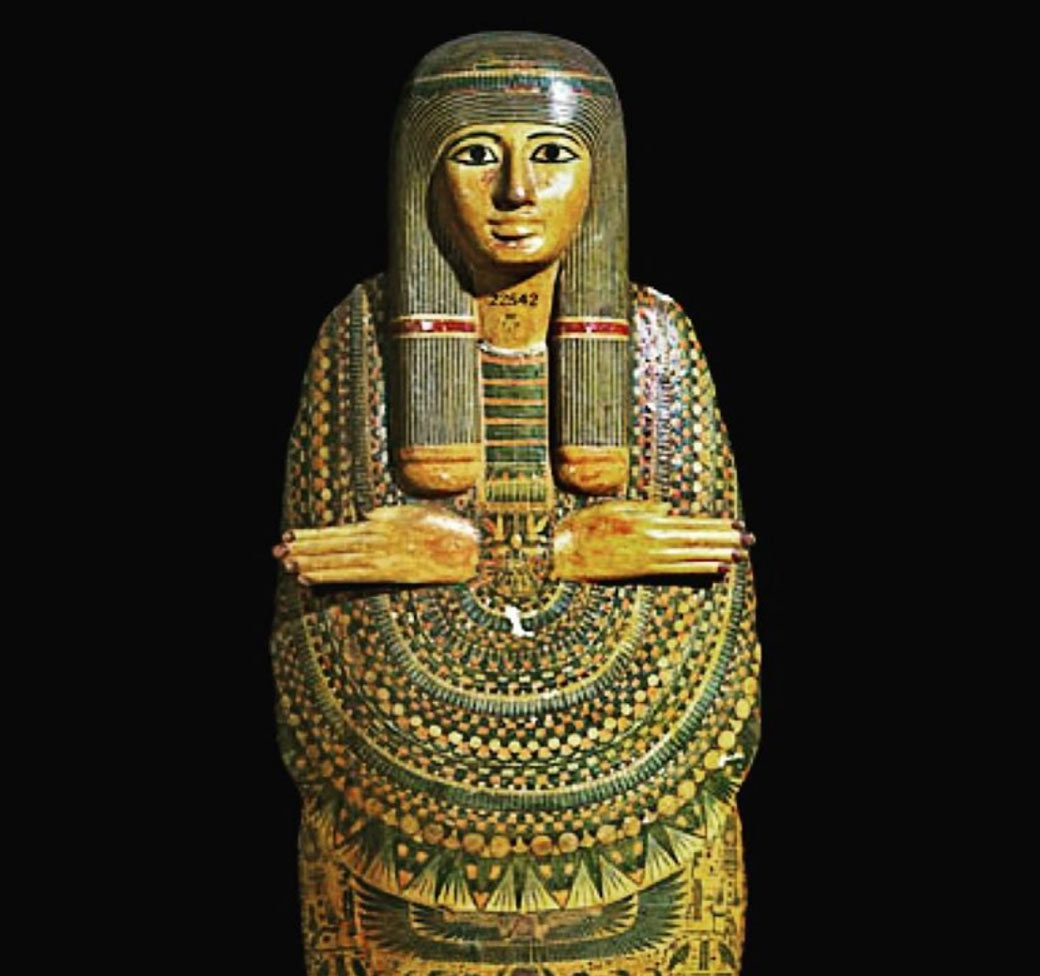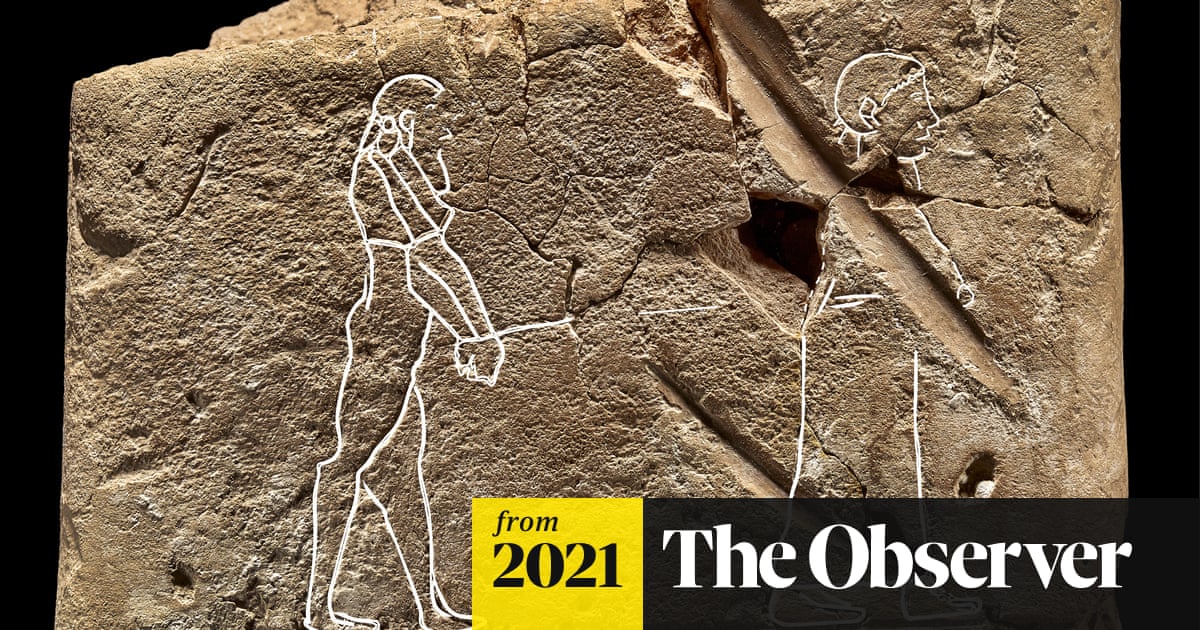Examine museum with caution

What lurks within the British Museum
It is hardly surprising that such a venerable institution as the British Museum (which was founded in 1753 and opened to the general public six years later) has accumulated its fair share of spectral happenings, given the sheer tonnage of purloined ancient antiquities stored there.
Indeed the Museum has featured as a ‘character’ in Jacques Tourneur’s superb Night (Curse in the US) of the Demon (1957) and, more recently in the Marvel mini-series Moon Knight (2022).

Frights, Camera, Action
Also filmed on the premises: The Wakefield Case (1921), Blackmail (1929 - photographic backdrops), Bulldog Jack (1935), Phaedra (1962), The Ipcress File (1965), Day of the Jackal (1973), Maurice (1987), Tale of the Mummy (1998), The Mummy Returns (2001), Possession (2002), Night at the Museum (2006), sequels Battle of the Smithsonian (2009) and Secret of the Tomb (2014), Justice League (2017), Wonder Woman (2017) (but not actually set in the museum), Gold Digger (2019) BBC drama series, and Ammonite (2019).
But back to the theme of this piece; hauntings at the British Museum:

The Anglo-Saxon treasures discovered at Sutton Hoo appear be enchanted in some way - witness this claim of a warden there:
“Between galleries 42 and 41, the doors were notoriously old and warped and difficult to shut. We got the one door, but then it just wouldn’t quite meet the other, and so my colleague slammed it, and kept slamming it, and then all of a sudden, the door that was closed flung back open. He felt something push against his chest.” With this, the warder pantomimed his wrist thrusting forward, as if pushing his colleague’s sternum and launching him—“a big lad”—into the air. His supervisor watched helplessly as “He got knocked right back off his feet, and onto his backside. And then the doors slammed. Bang!”

Revolt amongst the spectral guardians
Patsy Sorenti, psychic medium and keen student of Anglo-Saxon England, claimed some of the happenings in Gallery 42 were caused by the conversion of the adjacent Medieval Christian Relics Gallery into an Islamic Gallery, causing a revolt amongst the spectral guardians against the custodians of the museum.
“Whoever was looking after that, whoever was linked to those objects, maybe more than one person, has got the hump, because you swapped Christianity for Islam, and in the Medieval world, in those times, that was the devil. Because you represent the people who work here [you] are responsible. That’s why the doors closed on you, and that’s why your man was thrown. That’s what it is – you’ve replaced Christianity, you have replaced it with something that’s a devil to us. You displaced us for that.”
The Sutton Hoo treasure is of the time when the Anglo-Saxons were still pagan, or at least semi- heathen, so maybe a (very) doubtful theory...
Eerie areas of cold air have been felt near the winged bulls from Khorsabad at the entrance of the Assyrian gallery. They once guarded the entrance to the royal palace of King Ashurnasirpal II (883 to 859BC) in Nimrud, Northern Iraq.

Lower grade attendants usually bear the brunt of paranormal aggravation. According to Collections Manager Jim Peters, “There was a time when the cleaners refused to clean the cases in the mummy gallery because the mummies would move, so they refused. They genuinely believed that the mummies were moving, and refused to go in there. So, the museum had to do something about it, and get different people in.”

He continued, “The fact that the cleaners said they’d seen their wrappings rippling… The museum said, ‘Oh that was just the cleaners over-cleaning the cases! They’d caused a build up of static ‘cause the cases hadn’t been opened for awhile, so it built up the static charge in the air, and it meant things seemed to be moving, but they weren’t really.’ Everyone just went, ‘Ahh thanks for explaining that, we can go back to work now…’ But you know, you’d have to be quite close, and they’d have to be quite light fabrics, and you’d have to be really aggressively over-cleaning… I never really bought that, but that was the resolution.”


Museum staff have seen visitors talking to the Statue of Goddess Sekhmet, believing it has supernatural power.

Connected to the 'curse' of the ‘Cursed Mummy’ the priestess of King of the Gods Amen-Ra's tomb, an Egyptian revenant, was said to rise from it to wail and scream in the tunnels of the British Museum Station before it closed in 1933; she has now moved on further down the track, to Holborn station.
The Parthenon (Elgin) Marbles were reportedly heard ‘weeping’ in the crate as they were transported to the UK in the early 19th century. And who can blame them?

Museum-related ghost stories supposedly banned
Quite a few such experiences have apparently gone unreported, with an unnamed former museum director supposedly banning the collection of Museum-related ghost stories for publication. But they ‘live’ on, and are repeated on nightly patrols, in pubs and homes amongst those who say they have encountered the Museum’s unquiet spirits.
A female warden recounted an incident in one of the Museum’s many storage rooms for excess exhibits, “The only way I could perceive it was, someone had put their hand in, and grabbed my spine and sent the biggest chill up my spine… I kind of ignored it, and said to my colleague, ‘that was weird, you can unlock that in the morning. I refuse to go back there.’ When we got back to the same area again, I got the same chills but he actually had jelly legs as well, for no reason whatsoever… It completely put me off that whole area… It was that feeling of, ‘I’ll get up your back. I want you out my area’, we just went out of there as quick as you could say ‘boo.’ We were gone. We were gone.”
Interest in the paranormal life of the Museum has increased recently with talks, novels, and articles on the apparent phenomena which have occurred there, including an evening this April at Conway Hall entitled: London Fortean Society: Haunted London: Ghosts of The British Museum and Bloomsbury:
A lot of the mummies should be back in their graves
In May 2020, The Daily Mail published: A (spooky) Night At The Museum: Guards report doors unbolting themselves, midnight fire alarms and mysterious chills near exhibits that one investigator believes are desperate to leave the British Museum.
The article included the following observations, “Mysterious footsteps, music and ghostly crying have plagued the halls of the 18th century institution as night security teams patrolled the galleries, which are home to more than eight million artefacts from Ancient Egypt to the Aztec Empire. Glowing, white orbs have been spotted hovering above a staircase in the Great Court in the dead of night, only visible through CCTV footage.
Meanwhile foreign visitors have reported spotting the chilling ghost of a female dwarf in the reflection of a glass case after taking a photograph of a 16th century mechanical galleon. Lingering patches of cold air have been noted near a pair of winged bulls from Khorsabad at the entrance of the Assyrian gallery, 1843 Magazine reported. In the African galleries, a security guard also reported fire alarms sounding throughout the museum after he was compelled to point his finger towards the figure of a two-headed dog on two occasions. Others have noted hearing mysterious footsteps, music and crying throughout the halls of the tourist attraction, which receives more than 17,000 visitors per day when open.
Phil Heary, who worked at the museum for 29 years, added he once felt the temperature dramatically fall for no known reason in the Ancient Egypt gallery, where 19 mummies were on display. 'It was like walking into a freezer,' he said. 'My stomach turned over. The feel of the gallery was – you wanted to get out. I'm a great believer that, wherever you’re buried, you should stay there. A lot of the mummies there should be back in their graves.'
Along with The Parthenon Marbles, many other exhibits are the subject of dispute with their countries of origin, including:
The Rosetta Stone – claimed by Egypt

Benin Bronzes – claimed by Nigeria

Dunhuang manuscripts, from the Mogao Caves, including the Diamond Sutra – claimed by the People's Republic of China.
Ethiopian Tabots, Pre-Axumite Civilisation Coins – claimed by Ethiopia.
Irish artefacts such the Bell Shrine of St. Cuileáin, Londesborough Brooch, swords, half of the Dowris Hoard, part of the Mooghaun North Hoard, the Dunaverney flesh-hook, the Kells Crozier, torcs, four crucifixion plaques, armlets, seals, religious plaques, rings, and other assorted Gaelic bric-a-brac.

Hoa Hakananai'a – claimed by Chile on behalf of Easter Island.

Persian empire gold and silver artefacts from the Oxus Treasure - Tajikistan.

Aboriginal shield – claimed by Australia’s Aboriginal dwellers.
Welsh artefacts – claimed by the Cymru, including the Llanllyfni lunula, Mold gold cape, the Rhyd-y-gors Shield, and Moel Hebog shield.

The world’s oldest drawing of a ghost
From The Guardian in October 2021: Figures of Babylon: oldest drawing of a ghost found in British Museum vault - A 3,500-year-old image tablet of a ‘miserable male ghost’ gives up its secret
Its outlines are faint, only discernible at an angle, but the world’s oldest drawing of a ghost has been discovered in the darkened vaults of the British Museum. The back bears an extensive text with the instructions for dealing with a ghost that “seizes hold of a person and pursues him and cannot be loosed”. The ritual involves making figurines of a man and a woman: “You dress the man in an everyday shift and equip him with travel provisions. You wrap the woman in four red garments and clothe her in a purple cloth. You give her a golden brooch. You equip her fully with bed, chair, mat and towel; you give her a comb and a flask. “At sunrise towards the sun you make the ritual arrangements and set up two carnelian vessels of beer. You set in place a special vessel and set up a juniper censer with juniper. You draw the curtain like that of the diviner. You [put] the figurines together with their equipment and place them in position… and say as follows, Shamash [god of the sun and judge of the underworld by night].”
The text ends with a warning: “Do not look behind you!”
Sources include:
Stephen Arnell’s Roman novel THE GREAT ONE is available now on Amazon Kindle:









.jpeg?auto=webp)
No comments:
Post a Comment